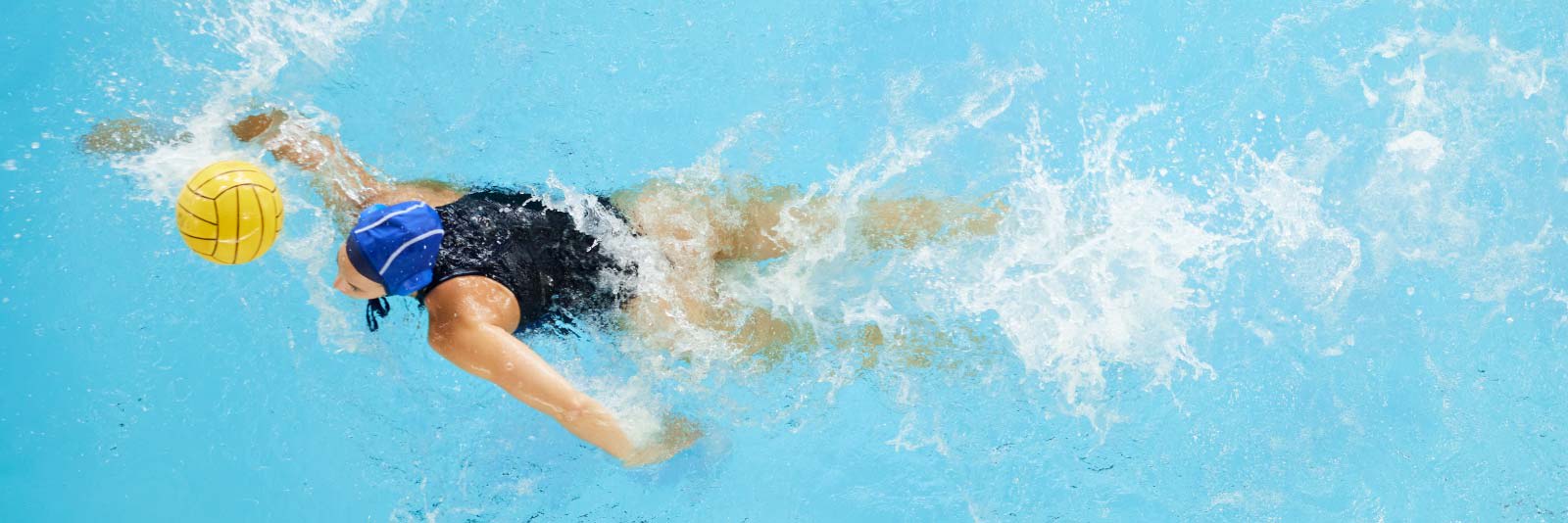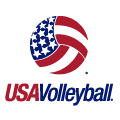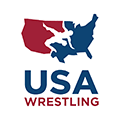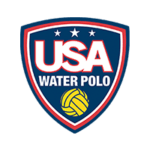Women’s Water Polo Recruiting Guidelines and Recruiting Standards

Women’s college water polo attracts top talent from across the US and internationally. With just 65 NCAA sponsored women’s water polo programs and one NAIA program, student-athletes can expect a high level of competition for a roster spot. Student-athletes can better their chances of being recruited by familiarizing themselves with what college coaches look for in women’s water polo players. From important stats to physical requirements to position-specific skills, college coaches have expectations for recruits at every division level.
This section outlines how to get noticed by college water polo coaches from the position-specific skills coaches look for at each division level to the physical requirements of female college water polo players.
Quick Links
How to get noticed by college water polo coaches
One of the first steps student-athletes should take to kickstart the recruiting process is to build a recruiting profile. This profile will allow student-athletes to increase their visibility and access to college coaches, who often use recruiting databases to search for talent. Student-athletes can use this profile to highlight important stats, upload a recruiting video and manage their communication with college coaches
Once the recruiting profile is built, student-athletes should send an introductory email to coaches at their target schools that includes a link to their recruiting profile. While college coaches won’t be able to respond to this email if it’s sent before June 15 of the recruit’s sophomore year, taking this initiative will impress college coaches and better position the recruit for the start of the recruiting process.
It is also highly encouraged that student-athletes competing in tournaments and college combines. Competing at these events provides student-athletes the opportunity to showcase their talents, connect with college coaches and gain experience competing in high-pressure situations. Student-athletes looking to better understand the NCAA recruiting process can attend college combines, which educate student-athletes and their families about the recruiting process in a positive and motivational environment.
Water polo body and physical requirements
Most women’s college water polo players are 5’7” and taller, with a wingspan that extends further than their height. Athletes with this body type benefit from a variety of advantages that allow them to block shots, steal the ball, shoot and swim. It’s important to note that body type is just one of many factors that college coaches consider during the recruiting process. Student-athletes will need to have the endurance, power and overall body strength to complement their inherited qualities.
What water polo stats are important to college coaches?
While college coaches do review stats, such as goals scored, ejections drawn and assists, these numbers do not have significant influence over the college water polo recruiting process. College coaches are more apt to focus on a recruit’s experience—years on varsity, years with a club team, Junior Olympic competition—and skillset when conducting their evaluations, as these are stronger indicators of a recruit’s true skill level and ability. Therefore, it is critical that student-athletes compete at both the varsity level and on a club team to develop as an athlete and gain playing experience.
What is a good 50- and 100-yard freestyle time?
While student-athletes should focus on developing strong swimming skills, college coaches are more interested in an athlete’s quickness and water polo IQ. Typically, top tier college water polo players swim a 50- and 100-yards freestyle in 22 and 54 seconds, respectively. As student-athletes transition from high school to college water polo, speed and swimming skills play a critical role in an athlete’s ability to adjust to the fast-paced nature of college water polo. International athletes are likely to have a smoother transition than US athletes, because they compete in a much longer course in high school (30-meters), while US women’s high school and college water polo athletes compete in a 25-yard course.
But it takes more than swim speed to impress a college coach. Athletes’ ability to act quickly relies heavily on their ability to assess a situation, anticipate plays and react accurately. This is known as water polo IQ and only the most successful water polo players have a balance of strong swimming skills, great vision and reaction time.
Women’s water polo recruiting guidelines and swim times for water polo recruits
| Tier 1 (NCAA D1) | Tier 2 (NCAA D2, D3, NAIA) | Tier 3 (Junior College) | |
| Swim Time (50 free) | 24–25.5 seconds | 25–26.5 seconds | 26–27.5 seconds |
| Swim Time (100 free) | 53–56 seconds | 55–58 seconds | 57–1:00 seconds |
| Club Experience | Junior Olympic qualifier or Zone Team member | Junior Olympic qualifier or Zone Team member | Club team |
Recruiting guidelines for women’s water polo goalies
Tier 1 water polo goalies
Tier 1 water polo goalies meet the recruiting expectations of Division 1 college coaches. These goalies are known for their quick reactions and strong legs and core. Tier 1 goalies are the best in the game at covering the entire cage with quick lateral movements, anticipating shots, tracking the ball and launching after it to stop the shot. As the leader of the defense, they effectively set the team up to protect the goal and prevent gaps in the defense to combat offensive breakaways. With their strong passing ability, these athletes can make a stop and clear the ball to their offense.
Tier 2 water polo goalies
NCAA Division 2 and 3 programs generally recruit tier 2 goalies, as well as NAIA programs. These athletes can effectively cover the cage with good body strength, reaction time and passing. They can both anticipate and prevent most scoring opportunities. They maintain focus on the game and balance their responsibility to guard the cage and lead the defense through clear communication.
Tier 3 water polo goalies
Tier 3 level goalies typically play at junior colleges. These athletes are well-versed in the fundamentals and possess good communication skills. Tier 3 goalies struggle to anticipate at what angle a ball will be launched at the goal and only occasionally block the ball. These goalies are most valuable if they show a willingness to learn. These goalies are committed to improving their water polo skills, becoming better leaders and building on their competition experience to become a better goalie.
Recruiting guidelines for women’s water polo utility players
Tier 1 water polo utility players
As the most versatile water polo athletes, tier 1 utility players are a great fit for Division 1 water polo programs. These athletes have the strength and endurance to constantly transition from offense to defense with the purpose of creating and preventing scoring opportunities on both sides of the pool. As a result of their elite competition experience, these athletes have a strong water polo IQ. Hyper-aware of their surroundings, tier 1 utility players can create scoring opportunities by quickly scanning the pool to find open players. These athletes are able to drive the ball to the goal and shoot at a variety of ranges.
Tier 2 water polo utility players
NCAA Division 2 and 3 and NAIA water polo programs generally recruit tier 2 utility players. These athletes are versatile, with the swimming skills needed to switch from offense to defense quickly. Relying on their water polo IQ, these athletes are able to assess a situation swiftly, communicate with teammates and create scoring opportunities. These athletes can shoot the ball from fewer angles than tier 1 athletes, but they drive the ball to the goal in most situations.
Tier 3 water polo utility players
These athletes lack the versatility of tier 1 and 2 utility players, making tier 3 utility players best suited for junior college. These athletes are slower to the transition between offense and defense, which means they are able to create and prevent fewer scoring opportunities. When these athletes drive the ball to the goal, they only make some of the shots they attempt. With less experience than higher-level utility players, these athletes lack the water polo IQ needed to accurately assess a situation and act quickly.
Recruiting guidelines for women’s water polo center forwards
Tier 1 water polo center forward
Tier 1 center forwards are elite water polo athletes with the physical presence, endurance and vision needed to play Division 1 water polo. Playing a heavily guarded position, these center forwards are extremely strong swimmers who rely on this skill to get open to assist and score. Tier 1 center forwards have strong ball-handling skills and lead their team in points with their ability to score at a variety of angles. These athletes lead the offense in executing strategic plays with clear communication.
Tier 2 water polo center forward
Tier 2 center forwards are most likely to play at an NCAA Division 2, Division 3 or NAIA water polo program. These athletes are often able to gain position over defenders with their strength and good swimming skills to help assist their teammates and create scoring opportunities. While these athletes have less of a command over the offense, they are good communicators while executing plays. These athletes can shoot and score at most angles.
Tier 3 water polo center forward
Junior colleges recruit athletes will the skillset of tier 3 center forwards. These athletes lack the physical presence, endurance and strength that tier 1 and 2 athletes bring to the game. While good swimmers, these athletes struggle to overcome a defender when attempting to assist teammates and score. They handle the ball well, but only attempt shots at comfortable angles. Unlike higher tier center forwards, tier 3 center forwards are not as comfortable leading the offense.
Recruiting guidelines for women’s water polo center backs
Tier 1 water polo center back
Tier 1 center backs are typically recruited by Division 1 water polo programs. As elite water polo players, these athletes rely on their physical advantages—including height, wingspan and body strength—to defend the goalie and prevent scoring opportunities. Their strong swimming skills allow them to swim from one side of the pool to the next swiftly and successfully steal the ball. When executing both zone and man-to-man defense, these athletes are able to defend center forwards from both in front and behind.
Tier 2 water polo center back
Tier 2 center backs are most likely to be recruited by NCAA Division 2 and 3, as well as NAIA institutions. These athletes navigate the pool with their good swimming skills while defending the goal. They have the strength and endurance to execute zone and man-to-man defense effectively. These athletes occasionally steal the ball from center forwards and prevent scoring opportunities.
Tier 3 water polo center back
Tier 3 water polo center backs lack most of the physical advantages of tier 1 and 2 athletes, making them a better fit for junior colleges. Despite this, these athletes maintain a good physical presence on defense. Tier 3 center backs are well-versed in zone and man-to-man and able to cover center forwards from both front and back. These athletes are not consistent in their ability to stop scoring opportunities and steal the ball away from the offense.
Recruiting guidelines for women’s water polo drivers
Tier 1 water polo driver
Division 1 water polo rosters are filled with tier 1 drivers. Quick, alert and persistent, these athletes consistently free themselves of defenders to gain possession of the ball. When they have possession of the ball, these elite water polo players can quickly change directions and drive the ball to the goal to create scoring opportunities. These athletes have great command over the game and lead the offense against top talent.
Tier 2 water polo driver
To play at an NCAA Division 2 and 3 water polo program or NAIA program, athletes need the skillset of a tier 2 driver. These athletes remain aware of their surroundings throughout the game and are able to use their speed to get free of defenders, gain possession of the ball and create scoring opportunities. These athletes don’t make every shot, but they are persistent in their efforts to create scoring opportunities. They are clear communicators, but are not natural leaders of the offense, like tier 1 drivers.
Tier 3 water polo driver
Tier 3 drivers are bound for junior college water polo programs. These athletes lack the quick and consistent nature of tier 1 and 2 drivers. These athletes are not consistently able to break away from the defense or change direction as quickly and efficiently as elite water polo athletes. When they have possession of the ball, they are able to drive toward the goal, but are inconsistent at scoring. While good communicators, they struggle to lead the offense in high pressure situations.
What is a good save percentage for a goalie in women’s water polo?
Compared to other sports with goalie positions, water polo has the worst save percentages. The average save percentage for a water polo goalie is between 45 and 58 percent. Of course, water polo goalies don’t exactly have it easy. These goalies protect the smallest goals against the slowest shots in the NCAA while treading water continuously and exploding out of the water to stop a ball.
















